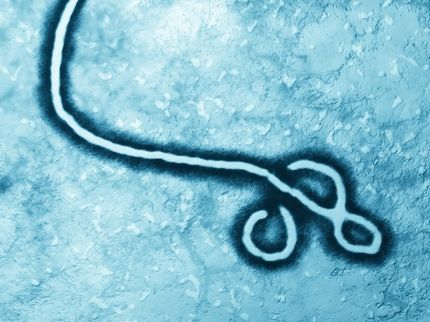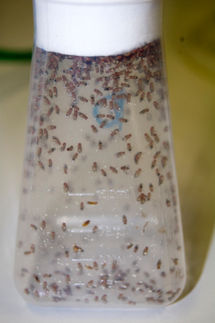Researchers rapidly turn bacteria into biotech factories
Advertisement
high-throughput sequencing has turned biologists into voracious genome readers, enabling them to scan millions of DNA letters, or bases, per hour. When revising a genome, however, they struggle, suffering from serious writer's block, exacerbated by outdated cell programming technology. Labs get bogged down with particular DNA sentences, tinkering at times with subsections of a single gene ad nauseam before moving along to the next one.
A team has finally overcome this obstacle by developing a new cell programming method called Multiplex Automated Genome Engineering (MAGE). Published online in Nature on July 26, the platform promises to give biotechnology, in particular synthetic biology, a powerful boost.
Led by a pair of researchers in the lab of Harvard Medical School Professor of Genetics George Church, the team rapidly refined the design of a bacterium by editing multiple genes in parallel instead of targeting one gene at a time. They transformed self-serving E. coli cells into efficient factories that produce a desired compound, accomplishing in just three days a feat that would take most biotech companies months or years.
"We initiated the project to close the gap between DNA sequencing technology and cell programming technology," explains graduate student Harris Wang, the paper's co-first author.
"The goal was to use information gleaned from genetics and genomics to rapidly engineer new functions and improve existing functions in cells," adds postdoctoral researcher Farren Isaacs, the other first author. "We wanted to develop a new tool and demonstrate how to apply it; we were determined to hand labs a hammer and a nail."
The key was to break free of linear genetic engineering techniques and move beyond the serial manipulation of single genes.
The researchers selected a harmless strain of the intestinal nemesis E. coli and added a few genes to its solitary circular chromosome, coaxing the organism to produce lycopene, a powerful antioxidant that occurs naturally in tomatoes and other vegetables. Now they could focus on tweaking the cells to increase the yield of this compound.
Traditionally, labs would accomplish this type of transformation by using recombinant DNA technology, also known as gene cloning, a complicated technique that involves isolating, breaking up, reassembling, and then reinserting genes.
The Church lab researchers took a different approach, blending an engineer's logic with a biologist's appreciation for complexity. "Genes function in teams, not in isolation," says Wang. "Cloning often encourages us to ignore the interdependence of genes and oversimplify the cellular system. We might forget, for example, that one mutation can strengthen or weaken the effects of another mutation."
"It's nearly impossible to predict which combinations of mutations will confer the desired behavior," explains Isaacs. "Biology is so complex that we don't know the optimal solution."
So the team retooled evolution to generate genetic diversity at an unprecedented rate, increasing the odds of finding cells with desirable properties.
The E. coli bacterium contains approximately 4,500 genes. The team focused on 24 of these—honing a pathway with tremendous potential—to increase production of the antioxidant, optimizing the sequences simultaneously. They took the 24 DNA sequences, divided them up into manageable 90-letter segments, and modified each, generating a suite of genetic variants. Next, armed with specific sequences, the team enlisted a company to manufacture thousands of unique constructs. The team was then able to insert these new genetic constructs back into the cells, allowing the natural cellular machinery to absorb this revised genetic material.
Some bacteria ended up with one construct, some ended up with multiple constructs. The resulting pool contained an assortment of cells, some better at producing lycopene than others. The team extracted the best producers from the pool and repeated the process over and over to further hone the manufacturing machinery. To make things easier, the researchers automated all of these steps.
"We accelerated evolution, generating as many as 15 billion genetic variants in three days and increasing the yield of lycopene by 500 percent," Harris says. "Can you imagine how long it would take to generate 15 billion genetic variants with traditional cloning techniques? It would take years."
The pathway the team refined plays a role in the synthesis of many valuable compounds, ranging from hormones to antibiotics, so the reprogrammed bacteria can be used for a variety of purposes. In addition, the MAGE platform itself unlocks new possibilities.
"We decided to engineer in the context of biology, embracing evolution rather than trying to fit a square peg in a round hole," says Church. "This automated, multiplex technology will allow labs to engineer entire pathways and genomes and take cell programming to a whole new level."























































